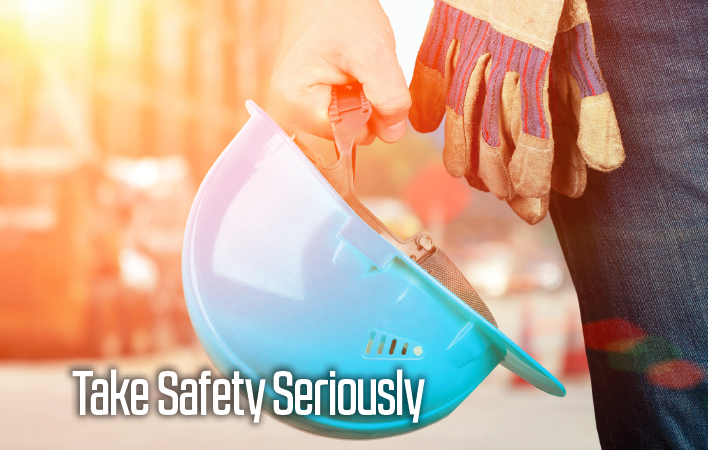It’s time to stop thinking of the construction industry as a “workplace where injury is inevitable.” Now is the time to stop the loss of life and fines in the construction industry. Change the safety culture and refuse to allow safety to be ignored or bypassed! Every year, the list of Top OSHA violations are also inevitably the causes of serious injuries and fatalities.
1. Fall Protection 1926.501 – 6,887 violations. Most violations are because of employees
working above 6 feet high on an unprotected edge. This can be addressed with awareness and use of guardrail systems, personal fall protection systems and/or safety net systems. This is additionally dangerous if employees or supervisors are cutting corners, getting rushed or don’t have the right equipment.
2. Hazard Communication 1910.1200 – 4,652 violations. Employers must develop, implement
and maintain a written program at each workplace, training on the hazardous chemicals employees are exposed to, and Safety Data Sheets must be accessible during each shift. Training and awareness can eliminate this hazard, and don’t forget to invest in proper personal protection equipment (PPE) to prevent chemical-related illnesses and injuries.
3. Scaffolding 1926.451 – 3,697 violations. This includes not having protection for employees
more than 10 feet above lower level, cross braces not used as access, work levels being fully planked and having a firm foundation. Get the proper training and knowledge to supervisors and employees when using scaffolding.
4. Respiratory Protection 1910.134 – 3,381 violations. This includes an employer requirement
of medical evaluation before use, written respiratory protection plan, and fit test for respirator that must be National Institute for Occupational Safety and Health (NIOSH) approved. Employees must be trained and medically cleared to use respirators, including N-95s.
5. Lock Out Tag Out 1910.147 – 3,131 violations. This includes development, documentation and annual evaluations of procedures for control of potentially hazardous energy, and training on the procedures and process of isolation of potentially hazardous energy. Prevent injuries with hands-on training and equipment evaluations.
Taking safety seriously could save an employee’s life, prevent a family from being destroyed, make your company a better place to work, lead to more opportunities for work, and prevent unnecessary fines and injuries — and more!
Greg Safran, ASC is a safety instructor at the Manufacturer & Business Association and is the chief SafT officer and founder of SafT Integration Consulting, LLC. He has more than 20 years of experience in helping employers build safe work environments. For more information, visit www.mbausa.org.












